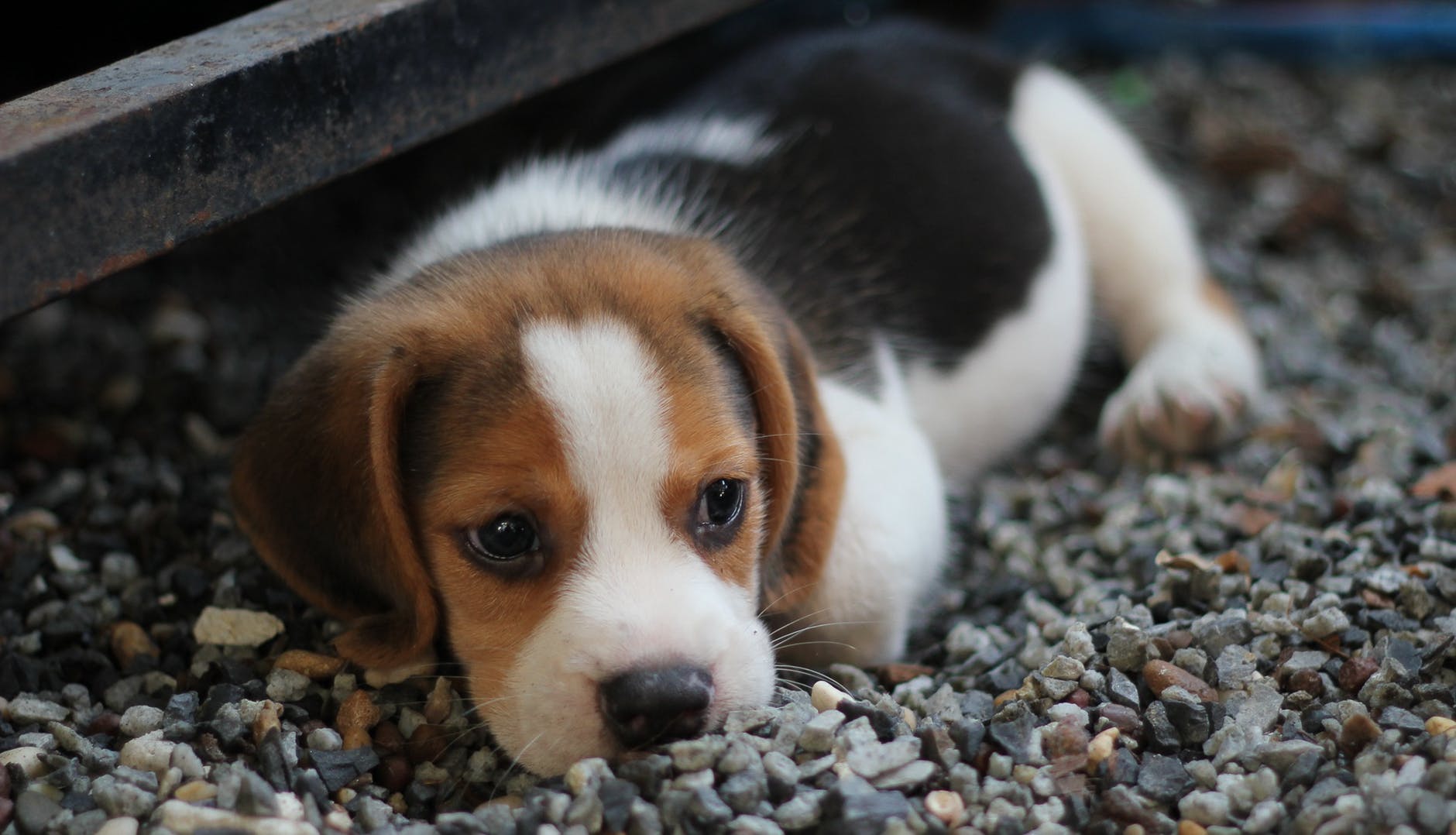Potty training is such a big deal for everybody, especially puppies!
Consistency is key, and you must establish good habits so that your pup knows when and how to go.
When I first got my dog, Fang, I was really worried about this.
I did not want a house that smelled bad because she couldn’t get outside to do her business.
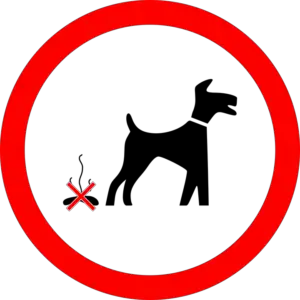
I began to look up a lot of information on the internet. I quickly became overwhelmed with the amount of information out there.
Choosing the best, good sources was going to be a challenge.
Hi there! My name is Nance.
I am so excited to be sharing with you my tips on how to potty train a puppy while you work.
There are lots of potty training methods available for you to choose from, and knowing which ones are the best can be problematic, especially if it’s your first time owning a dog.
I would like to share with you what I found and make it easier!
I settled upon the methods below. I first learned of them while reading Pippa Mattinson’s article about potty training on TheLabradorSite blog and decided these were the best.
They helped me out when I was training Fang, and you will like them too.
Potty Training Basics
Let’s first learn about some basics of potty training.
A good foundation is a great start, and then you can work on the more advanced stuff as you and your puppy grow together.
There are three main stages to potty training a puppy.
- Learning where the right place to potty is
- Learning how to control it (so you don’t have to worry while at work!)
- Going to the bathroom independently
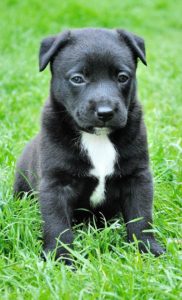 We will examine a method you can use to keep your puppy happy and relieved while you are at work all day.
We will examine a method you can use to keep your puppy happy and relieved while you are at work all day.
He or she will learn to go on puppy pads at first. Then you can get more advanced with it as time goes on.
Fang learned how to do this, and now she is capable of waiting for me until I come home on my lunch break to let her out.
If your dog lives in a small house and has access outside all the time, such as through a doggy door, then it is likely that your pooch might just train himself.
Dogs want to potty as far away as they can from their sleeping areas.
But many of us live in homes big enough that allow dogs to poop and pee inside, still far away from their beds.
Therefore, it is key that you establish a potty location quickly and stick with it.
New puppies do not have good control over their bladder. They need training about where and when it is appropriate to go pee.
They will often just pee right where they are, they are so young.
If you are struggling to train your dog we have created a great article which reviews Brain Training 4 Dogs an amazing programme that can teach your dog amazing tricks
If you would like to see our review of this click here!
The Method
Chances are, you probably want to crate train your puppy, which is good.
Dogs love being in their crates, as they crave a special, small space all for themselves.
 However, puppies are different.
However, puppies are different.
They must empty their bladder at regular times during the day and cannot remain in a crate like a grown dog can.
You might consider having a friend or family member come over to take the puppy out for a little playtime and potty time during the day if you cannot come home on a break.
However, puppies cannot control when or where they go.
If your pup needs to go before somebody gets there to let him out, then he will do it.
How can you prevent a huge mess, you ask? Puppy pads or newspaper.
You can find puppy pads in many sizes at your local retailer or pet shop. And the method by which to train him is easy.
You just have to find a room that is small and washable. You might consider a laundry room or bathroom for this.
Cover the floor with the puppy pads and restrict your dog to that room.
If you do not have a room that is small with a washable floor, you can get a puppy playpen to keep him or her contained.
As the days go on, reduce the puppy pads to about half.
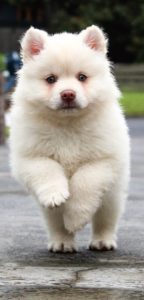 Take some away each day until the floor is covered with half the number of pads you started with.
Take some away each day until the floor is covered with half the number of pads you started with.
Your pup will make an effort to pee and poo on the part of the floor covered by the pads.
If your dog is in a puppy playpen, put the dog bed at one end, and the pee pad at the other end.
By the time the first weekends, you should reduce the pads down to a small area.
You will want to place them by the door, preferably.
This way, the puppy will learn to wait until somebody comes to let him out. Chances are, he will stay dry and so will the puppy pad.
However, it is not all easy street.
I know with Fang, we had a few accidents here and there, and I genuinely got upset a few times. Be persistent and do not punish your puppy if he or she messes up.
Doing so will make your puppy afraid to pee in front of you, they might also hide when they have to go to avoid being punished.
Make sure to reward your dog for good behavior by providing a treat.
Other Tips You Can Use
It may behoove you to take some time off at work to bond with and train the new puppy, but we all know that is not always an option.
Besides, most dogs do not gain full control over their habits until about six months of age.
It usually works as such: By about three months, the puppy can stay clean and dry in a restricted area (with the puppy pad) and by about six months, they will be able to last about two to three hours between going outside.
Accidents can and will happen.
Be sure to address the mistakes quickly, and as previously mentioned, do not get upset or punish your puppy.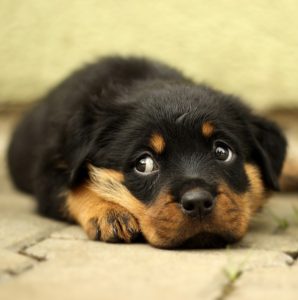
You must address these mistakes quickly so that your progress is not lost.
Two great tips for making sure your puppy does not go pee or poop in the house are as follows:
- Clean up any messes right away, and clean them thoroughly
- Take him or her out more often (or have someone come over for you while you are at work).
Puppies are still learning, and their memories are rather short. You must be consistent and remind him to go frequently.
Ideally, you want to take him out right after a meal or water. This way, he becomes aware of the process and when to go.
You can also set alarms during the day so that your dog knows when it is time to go and will become used to the process.
If you take your dog outside, use a certain word or phrase each time you go out.
This will trigger the urge to go in your dog, and he will relieve himself almost immediately after hearing it.
The important thing is to learn from your pup’s mistakes.
Observe and supervise your dog. After eating, walk him out into the yard every few minutes. When he finally goes, you will know how soon to take him out after eating.
And cleaning up accidents is very important-if puppies smell urine, they will think it is okay to go there again, leading to more messes.
Final Thoughts
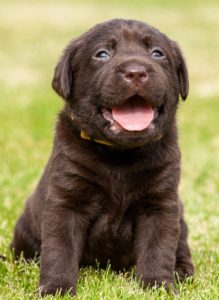 These are the tips I have that proved effective while working with my dog.
These are the tips I have that proved effective while working with my dog.
I first put Fang in the bathroom and laid out many puppy pads. As the week went on, the puppy pads reduced to half, and then only one by the door.
I then laid the pad in the hallway near the back door. The pad then moved to the back door of the house, where the yard is.
Fang soon learned that outside would be the place to pee, and I was gradually able to take her outside and show her where to go.
However, the puppy pads worked great until I could arrange my neighbor to come by and let her out for a potty break.
Now I see her on my lunch and she knows when I say, “Chop chop!” that it is her cue to pee and poop so I can get back to work.
It took consistency and some good treats, but Fang now stays in her crate accident-free until I get home each day.
Just remember to be patient and kind to your puppy.
They do not know what they are doing yet-but they will learn with good training and care. You can do it and so can your puppy.
Make it a fun experience and be sure to praise your dog when he or she does their business in the right area.
I hope this article has helped new pet parents who are at work all day!
I wrote it, so you could get right to the point and get your dog to pee and poo in the right places.
Please leave us a like, comment on this post, and share your own tips for potty training if you work full time.
